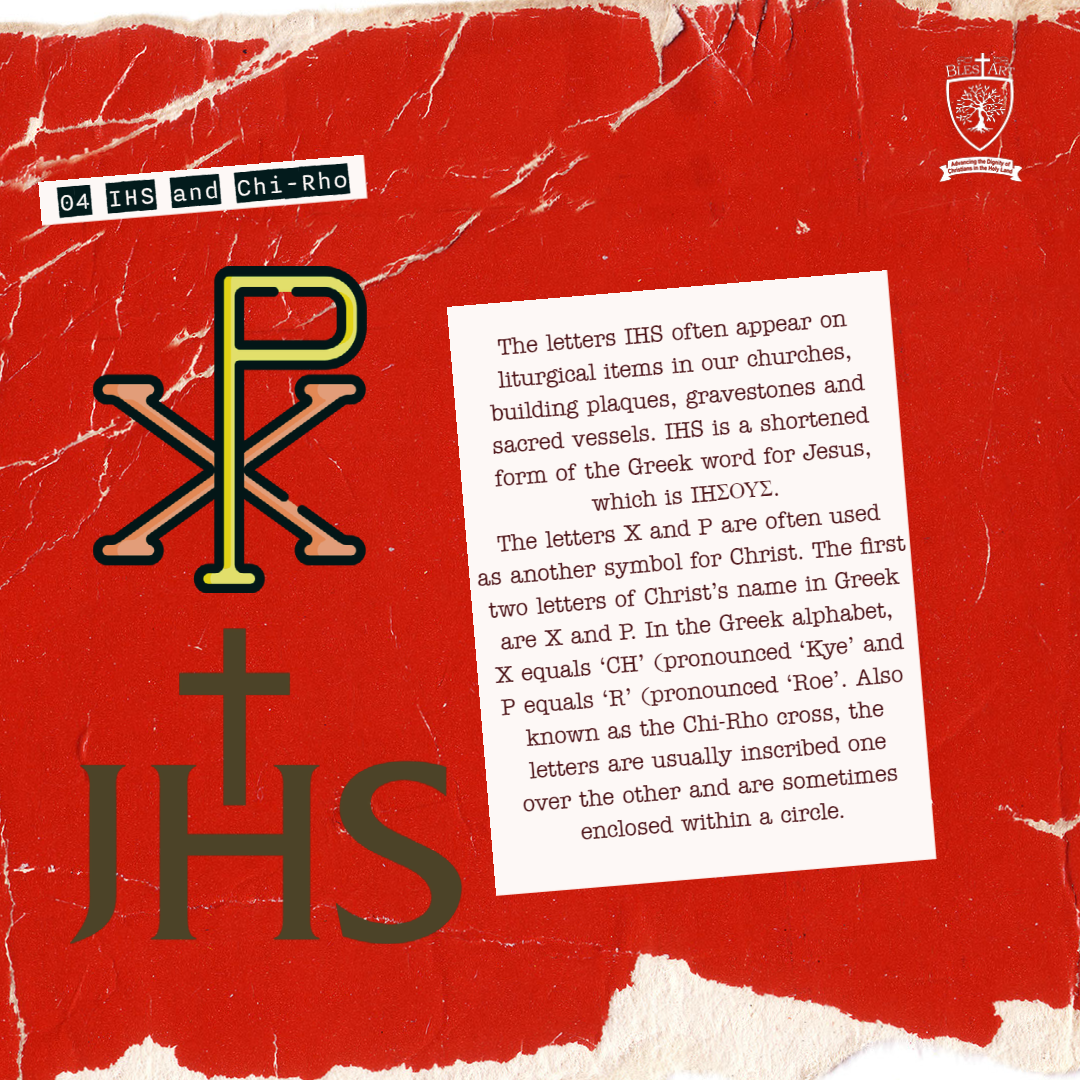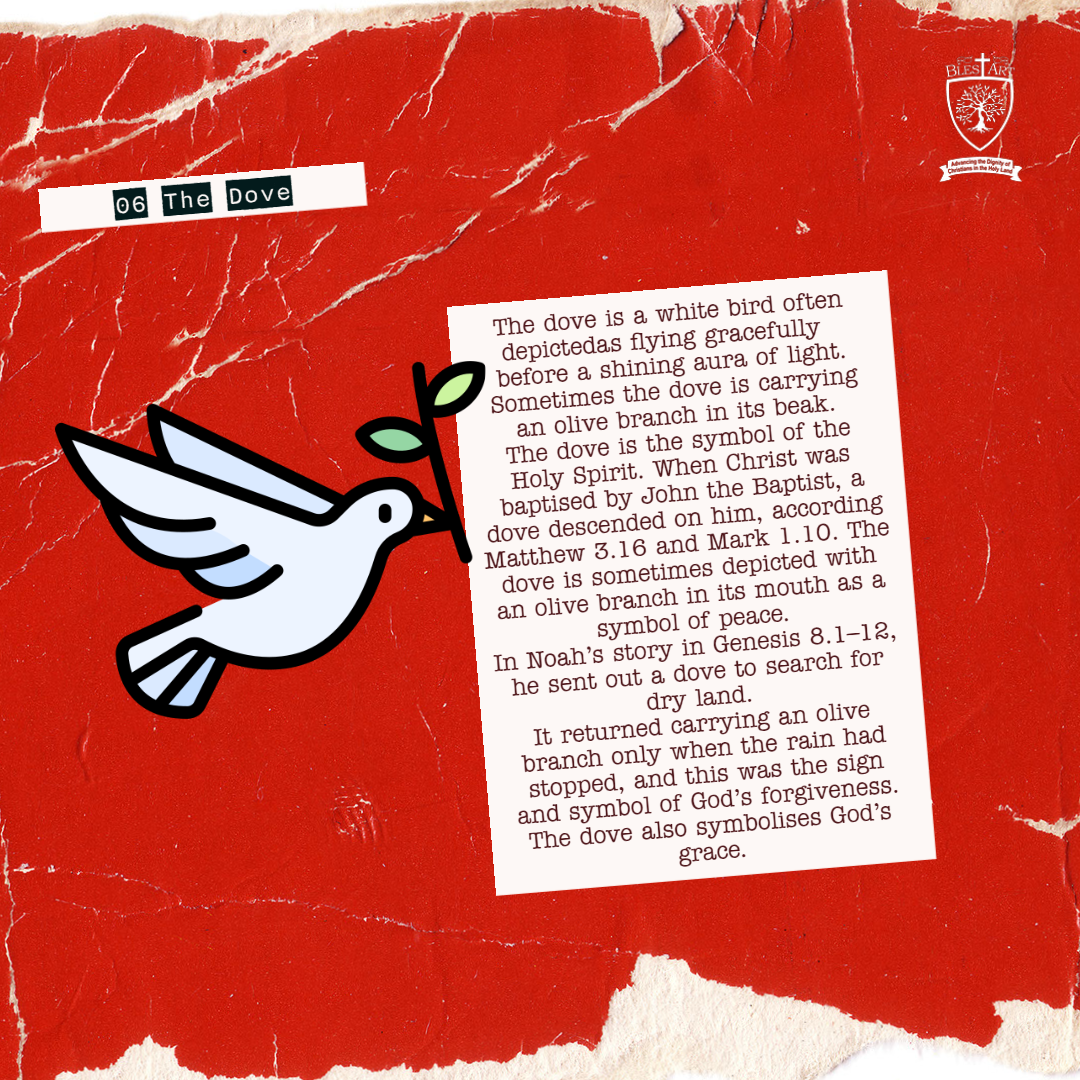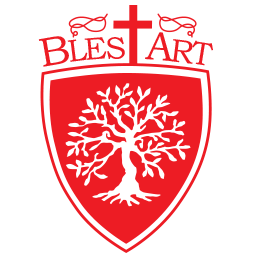Since the earliest times, symbols have been important in every human culture and religious system. Symbols convey meanings in what they represent, and they point beyond their own existence. Catholic symbols help us to deepen our faith and shape our prayer. They bridge the material and spiritual worlds, and reveal truths about God.
1. Crucifix
The most common symbol of our faith is the crucifix – a cross with the figure of the body of Jesus Christ attached to it. The crucifix is a symbol of sacrifice and atonement, since, according to the Bible, Jesus died for the sins of the world. The crucifix is found wherever there is a Catholic presence. A crucifix usually has the letters ‘INRI’ carved into the wood of the cross. These letters are short for the Latin phrase, “’Iesus Nazarenus, Rex Iudaeorum’, which translates as ‘Jesus of Nazareth, King of the Jews’. These are the words which Pontius Pilate, the Roman governor of Judea who sentenced Jesus to death, ordered to be written on the cross on which Jesus Christ was crucified.
2. Alpha and Omega
Alpha and omega are the first and last letters of the Greek alphabet. They are used at various times in the Church’s liturgical year. The alpha and omega have been used by Catholics since the fourth century as symbols expressing the confidence of Christians that God is infinite and eternal. In the book of Revelation 1.8, 21.6 and 22.13, Christ refers to himself as the alpha and the omega – that is, the first and the last. These two letters symbolize the fact that Christ is the beginning and the end of all creation.
3. The Sacred Heart
In Catholic art, the Sacred Heart is depicted as a flaming heart. It is usually shining with divine light, pierced from a lance, encircled by a crown of thorns, surmounted by a cross, and bleeding. Sometimes it is shown in the chest of Jesus Christ. The wound, thorns, and blood represent Jesus’ crucifixion, and the flames represent the transformative power of divine love. The Sacred Heart is an object of devotion for Catholics everywhere and shares the message of Jesus’ sacrificial love for humanity. On its own the heart is a symbol of love, but the Sacred Heart, pierced and wrapped in thorns, shows the depth of Jesus’ love and that his love is eternal.
4. IHS and Chi-Rho
The letters IHS often appear on liturgical items in our churches, building plaques, gravestones and sacred vessels. IHS is a shortened form of the Greek word for Jesus, which is IHΣΟΥΣ. The letters X and P are often used as another symbol for Christ. The first two letters of Christ’s name in Greek are X and P. In the Greek alphabet, X equals ‘CH’ (pronounced ‘Kye’ and P equals ‘R’ (pronounced ‘Roe’. Also known as the Chi-Rho cross, the letters are usually inscribed one over the other and are sometimes enclosed within a circle.
5. The Fish
One of the oldest Christian symbols is the fish. It was used by Christians to identify themselves and each other, often in times of persecution. It was found in the Roman catacombs, a secret meeting place during the time when the Christians were persecuted for their faith by the Romans. The fish is based on the first letters of the Greek words for Jesus Christ. The Greek word for fish is ‘Ichthus’, which is also an acronym for Jesus. The Greek, ‘Iesous CHristos THeou Uios Soter’ translates in English to, ‘Jesus Christ, Son of God, Saviour’. Christ also referred to his apostles as ‘fishers of men’ while the early Christian writers called the faithful ‘little fish’.
6. The Dove
The dove is a white bird often depicted as flying gracefully before a shining aura of light. Sometimes the dove is carrying an olive branch in its beak. The dove is the symbol of the Holy Spirit. When Christ was baptised by John the Baptist, a dove descended on him, according Matthew 3.16 and Mark 1.10. The dove is sometimes depicted with an olive branch in its mouth as a symbol of peace. In Noah’s story in Genesis 8.1–12, he sent out a dove to search for dry land. It returned carrying an olive branch only when the rain had stopped, and this was the sign and symbol of God’s forgiveness. The dove also symbolizes God’s grace.
7. The Lamb
One of the most important symbols of Christ is the Lamb. Jesus Christ as the Lamb of God is mentioned in John 1.35–36 and Revelation 5.6–14. The Old Testament has several references to sacrificial lambs making this symbol more meaningful when it represents Jesus in the New Testament. The phrase ‘the Lamb of God’ is always used in the liturgy of the Mass. The whiteness of the Lamb symbolises innocence and purity. Christ, as the sacrificial lamb, who died for the sins of humanity was innocent and pure in his life and death. The lamb is sometimes portrayed with a flag. This is symbolic of Christ’s victory over death in his resurrection.
8. The Pelican
Medieval Europeans noticed that pelicans were particularly attentive to their young, and even thought they would wound themselves and let their young drink their blood when no food was available. Therefore, the pelican became a symbol of Christ’s passion. He poured out his blood for the forgiveness of our sins, as if shedding his blood for our spiritual food, which is what we encounter in the Eucharist.
9. Crossed Keys
In Christian art, crossed keys, also known as the ‘Keys of Heaven’, are a pair of keys that overlap creating an ‘X’. The keys are used in ecclesiastical heraldry, papal coats of arms, and symbolic images in holy places. The crossed keys represent the keys that Jesus promised to St Peter, empowering him to take binding actions in leading the institution of the Church. They are a symbol of the Pope’s authority. In Matthew 16.19, Jesus says to Peter: ‘I will give you the keys to the kingdom of heaven, and whatever you bind on Earth shall be bound in heaven, and whatever you loose on Earth shall be loosed in heaven.’ St Peter was the first pope, and those who succeed him share in the authority Jesus gave him.
10 The fleur-de-lis
The fleur-de-lis is a stylized lily composed of three petals bound together at their base.
The lily has been used in many places throughout history, serving formerly as the emblem depicted on the royal arms of France (a historically Catholic nation), and has always represented divinity.
In one interpretation, the flower is a symbol of the Virgin Mary, the mother of Jesus. The whiteness and beauty of the lily is symbolic of the purity of Mary Immaculate.
In another interpretation, the lily depicts the Holy Trinity, which consists of the Father (God), the son (Jesus Christ), and the holy spirit—or one God in three divine persons. The band which holds the three pedals together represents Mary, since it was she who bore the child of God.












